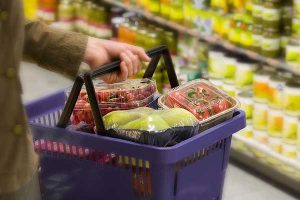 Sustainability has moved from a consumer-driven trend to a core business strategy in the food and beverage industry. With rising regulatory pressures, corporate ESG goals, and consumer demand for environmentally conscious products, packaging innovation is becoming just as important as product formulation. Manufacturers, chemists, and raw material suppliers are at the center of this transformation, driving new solutions that balance performance, shelf life, and sustainability.
Sustainability has moved from a consumer-driven trend to a core business strategy in the food and beverage industry. With rising regulatory pressures, corporate ESG goals, and consumer demand for environmentally conscious products, packaging innovation is becoming just as important as product formulation. Manufacturers, chemists, and raw material suppliers are at the center of this transformation, driving new solutions that balance performance, shelf life, and sustainability.
1. Bio-Based and Compostable Materials
One of the fastest-growing areas in food packaging is the use of bio-based polymers. Polylactic acid (PLA), polyhydroxyalkanoates (PHAs), and starch-based films are increasingly replacing petroleum-based plastics in applications such as trays, clamshells, and wraps. These materials offer biodegradability under industrial composting conditions while maintaining strength and clarity for food applications. Suppliers are also enhancing barrier properties, making them more suitable for moisture- and oxygen-sensitive products.
2. Recyclable Flexible Films
Flexible films dominate packaged foods, but their multi-layer construction often prevents recycling. New mono-material films, particularly those based on polyethylene (PE) or polypropylene (PP), are designed to provide high-performance sealing and protection while being compatible with existing recycling streams. Advanced coatings and barrier technologies are addressing long-standing challenges such as grease and aroma migration, helping brands maintain quality without compromising recyclability.
Access compliance data that helps you drive smart business decisions and manage product compliance across your entire retail ecosystem, at all stages, for every UPC, learn more here!
3. Paper-Based Packaging Innovations
Paper and fiber-based solutions are seeing strong growth, driven by their recyclability and consumer appeal. Manufacturers are developing water- and oil-resistant coatings derived from natural polymers such as cellulose or chitosan, reducing reliance on fluorochemicals. Molded fiber packaging, increasingly used for ready-to-eat meals and beverages, is also benefiting from material science advances that improve heat resistance and durability.
4. Edible Packaging and Coatings
Though still emerging, edible films and coatings are gaining traction as a way to reduce single-use plastics. Innovations include seaweed-based films, protein-derived coatings, and polysaccharide blends that can extend shelf life while being safe for consumption. These technologies are particularly promising for produce, snack, and single-serve applications.
5. Smart and Minimalist Designs
Sustainability is not only about material innovation but also about reducing waste at the source. Lightweighting, minimalist design, and smart packaging features that extend shelf life are helping companies lower overall packaging footprints. For example, antimicrobial coatings and oxygen scavengers can reduce food spoilage, aligning waste reduction with sustainability goals.
Opportunities for Material Suppliers and Formulators
Raw material suppliers and chemists have an essential role in scaling these solutions. Success depends on optimizing formulations for performance, regulatory compliance, and cost-effectiveness. Key areas of focus include:
- Barrier enhancement of bio-based and recyclable materials.
- Compatibility testing with food contact regulations across global markets.
- Processing efficiency to ensure materials run effectively on existing packaging lines.
- Circularity strategies, such as designing materials with recyclability or compostability in mind from the start.
Looking Ahead
Eco-friendly packaging is no longer a niche—it is becoming the new industry standard. For food and beverage manufacturers, the push toward sustainable packaging is both a challenge and an opportunity to innovate. By collaborating closely with chemists and raw material suppliers, the industry can accelerate the adoption of next-generation materials that satisfy performance needs while supporting global sustainability goals.
Sources:
- European Bioplastics. Bioplastics Market Data 2024. https://www.european-
bioplastics.org - Smithers. The Future of Global Packaging to 2028. Smithers Group, 2023.
- Ellen MacArthur Foundation. The New Plastics Economy: Rethinking the Future of Plastics & Packaging. 2022.
- Packaging Europe. “The Rise of Recyclable Mono-Material Flexible Packaging.” Packaging Europe, 2023.
- Allied Market Research. Paper Packaging Market Outlook 2023–2032.
- FAO (Food and Agriculture Organization). Edible Coatings and Films to Improve Food Quality. FAO Report, 2023.
- McKinsey & Company. Sustainability in Packaging: Inside the Minds of Global Consumers. 2023.
The views, opinions and technical analyses presented here are those of the author or advertiser, and are not necessarily those of ULProspector.com or UL Solutions. The appearance of this content in the UL Prospector Knowledge Center does not constitute an endorsement by UL Solutions or its affiliates.
All content is subject to copyright and may not be reproduced without prior authorization from UL Solutions or the content author.
The content has been made available for informational and educational purposes only. While the editors of this site may verify the accuracy of its content from time to time, we assume no responsibility for errors made by the author, editorial staff or any other contributor.
UL Solutions does not make any representations or warranties with respect to the accuracy, applicability, fitness or completeness of the content. UL Solutions does not warrant the performance, effectiveness or applicability of sites listed or linked to in any content.
